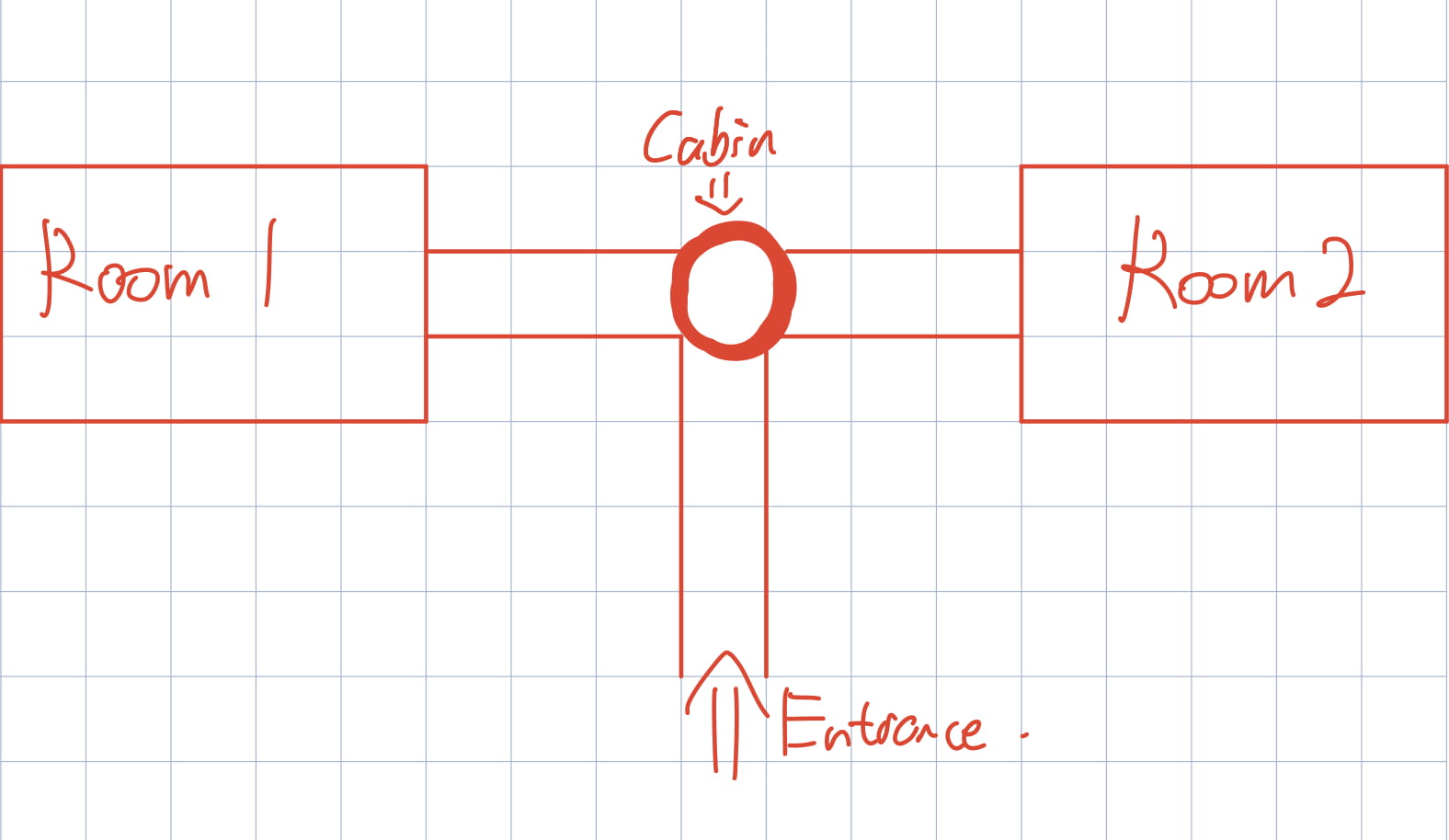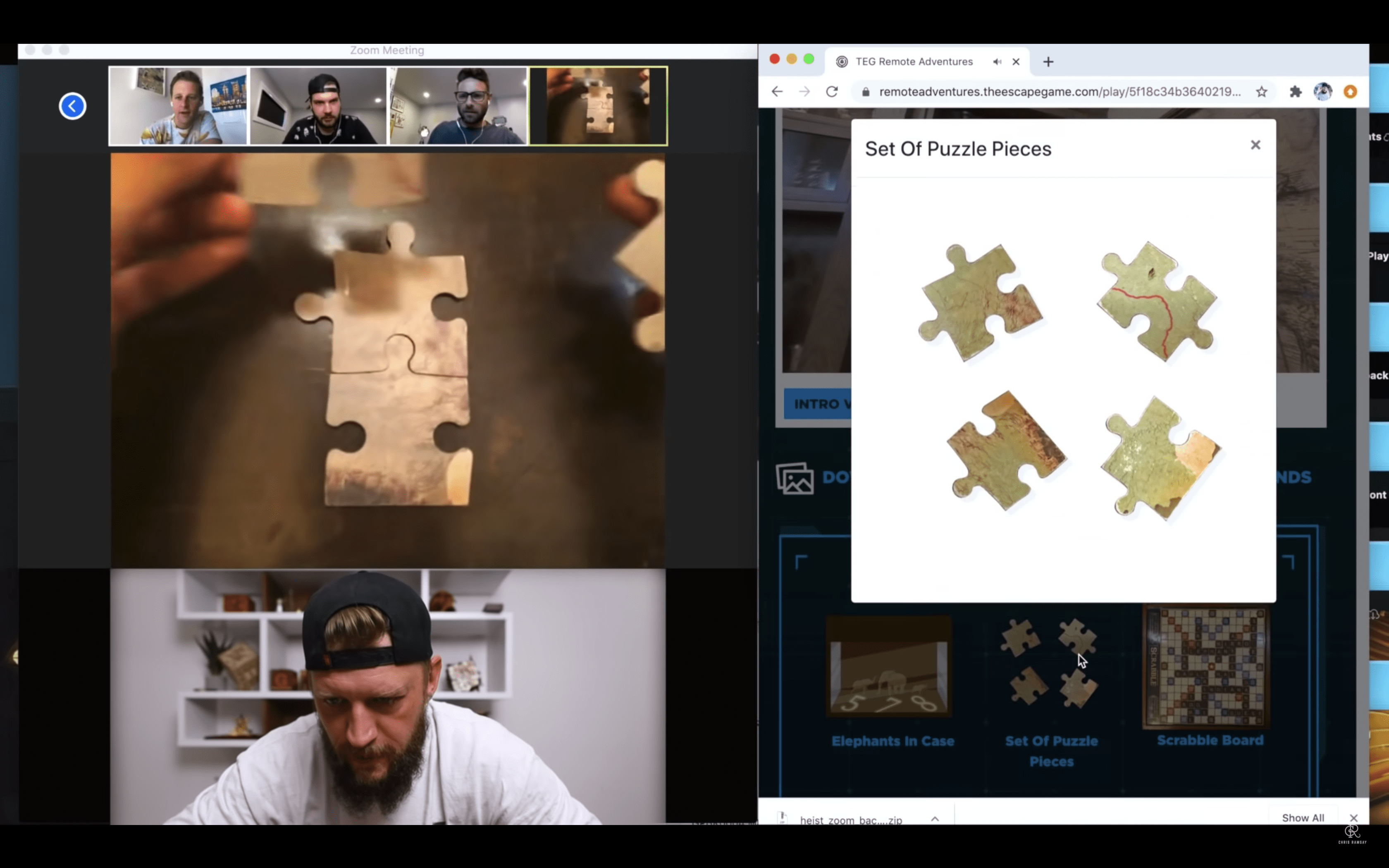W1
Ideate Settings and Flows
The room’s theme is fantasy and is a part of an ancient tomb located in a desert area. There are 2 parts of this experience, which are treasury hunting and escaping. An exploration team of 4 is the players in this room.
Due to the constraint on the space available, I have come up with this rough scratch on how we are going to organize the escape room.

At the entrance, they will be given their own bags, including their unique tools for puzzle-solving, a small piece of paper telling each one of them the branch mission, and a little handbook describing the story background. The team will first enter a cabin, which is their base. Because the tomb is far away from the earth’s surface. So they have an elevator-like cabin to move from scene to scene. The elevator will be decorated with columnar LEDs, which are used to form the illusion of moving up and down, and a screen playing the video or the audio of story-telling is placed to help them better understand their mission. After they grasp the main idea of the story, the door to room 1 will open. This part is 4-player teamwork, solving puzzles in sequence to find the treasure. Let’s assume it’s an ancient book, which also includes the clues to the final escape. Inside the room, floating textures will be projected on 4 walls to imitate the physical environment. And there will also be physical triggers there to make the whole experience more comprehensive. And there will be some real sand, if possible, near the ceiling so that when they successfully get the treasure and trigger the event, they will fall down to enhance the sense of realness. I imagine that there will be human NPCs when they finally find the book. They will be dressed in the way like a mummy. And one of them will first chase 2 team members to the cabin, meanwhile, another one is responsible for trapping the rest 2 in room 1. When the first 2 reach the cabin, the gate to room 2 will open, and they will solve puzzles there. After they get into room 2, the rest 2 members will be chased to the cabin, and NPCs will have the time to change the settings of room 1, making it suitable for the next scene. To do the resetting thing, I think we have to build some projection mapping stuff. And this phase will include 2 teams solving puzzles independently and collaboratively. They will have to work on their own to get the communication tool. And then will work collaboratively since both sides need the clues on the other side. This is when the branch mission begins to influence the 2 sides’ decision-making process. They have to confirm that the player next to them’s standpoint and try to figure out whether to team up with them. Moreover, they can choose whether they will treat other teams honestly to give the right clue to the same puzzle. But the challenge for the escape room designer is how to give both sides an equal chance to betray others. The last phase is again, 4 people collaborating with each other to try to find the way out. The entrance doesn’t necessarily have to be the cabin. It could be a flip side of the coffin, or a hidden trigger to stop the defense system of the tomb. I haven’t thought the detailed ending or puzzles through. But this is what the escape room generally looks like.
Field Notes
The game I play is a museum scenario. 4 players will collaborate with each other to find the real painting of Monet and get it out of the museum.

The rules of each room are pretty simple, which is basically finding all the clues and utilizing them to get to another room. It’s an online version of a physical escape room. So there will be 3-D models for each room and an item pack which demonstrates all the clues you have got. There is also an agent trapped in the physical room to represent the team. 4 players play the game via zoom and it’s actually making it harder to solve the puzzles since it requires all teammates to focus on a single puzzle rather than each one trying to solve one. The objects are all well-made to fit in the overall feeling of a museum and the manager’s office. There are basically all kinds of puzzles, including word puzzles, math, matching the map, physical interactions like spinning around the object, finding the hidden clue inside the word description of the storyline, using basic physical and geographical knowledge. The game begins by playing you with a video demonstrating the background information of this mission. And then it lets you go and explore the room with a timer hanging on the top of the wall. If you find yourself stuck, you can easily get in contact with staff to ask for help. The role of the game master is the host of this game, and he will be responsible for introducing players to this game and offering timely help to the puzzles. He is also responsible for ensuring players’ safety issues.

